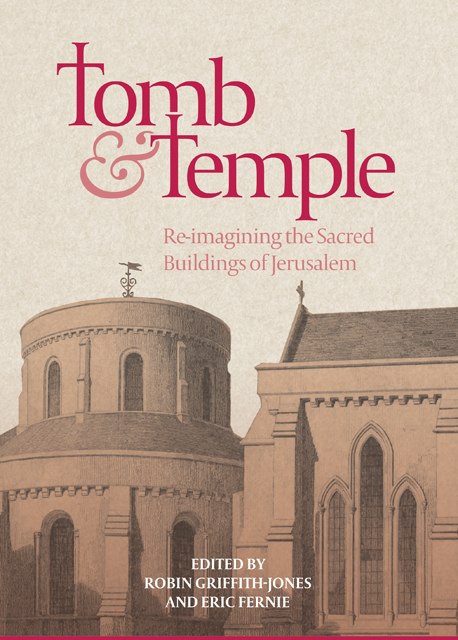Book contents
- Frontmatter
- Contents
- Illustrations
- Preface
- Contributors
- Abbreviations
- Editors’ Note
- Introduction
- Part I Re-presenting Jerusalem
- Part II The Church of the Holy Sepulchre
- Part III The Noble Sanctuary / The Temple Mount
- Part IV The Orthodox Churches
- Part V Round Churches in the West
- Appendix: The Knights’ Effigies: Newly Discovered Drawings by John Guillim, c. 1610
- Epilogue
- Index
- Already Published
3 - The Crusader Church of the Holy Sepulchre
Published online by Cambridge University Press: 17 January 2023
- Frontmatter
- Contents
- Illustrations
- Preface
- Contributors
- Abbreviations
- Editors’ Note
- Introduction
- Part I Re-presenting Jerusalem
- Part II The Church of the Holy Sepulchre
- Part III The Noble Sanctuary / The Temple Mount
- Part IV The Orthodox Churches
- Part V Round Churches in the West
- Appendix: The Knights’ Effigies: Newly Discovered Drawings by John Guillim, c. 1610
- Epilogue
- Index
- Already Published
Summary
The layout of the complex of fourth-century buildings begun by the Emperor Constantine I to enclose the tomb of Christ and the site of the crucifixion in Jerusalem is now reasonably well understood, as a result of excavations and restoration work undertaken over the last half century [Fig. 3.1]. The rock-cut tomb, detached from its parent rock, was enclosed by a small chapel or aedicule, around which was constructed a timber-roofed rotunda surrounded on all but the east side by an ambulatory with a timber gallery. The rotunda was entered on the east from a peristyled courtyard, which enclosed the rock of Calvary or Golgotha and other sites associated with the Passion. To the east of this stood a five-aisled basilica, also with galleries and with its apse on the west built over the spot where Helena was supposed to have found the relic of the True Cross. The basilica in turn was separated from the city’s colonnaded cardo by an atrium, propylaeum and steps.
This complex of buildings survived in more or less the same form until September 1009, when most of it was demolished by the Muslim governor of Ramla, Yārūkh, on the orders of the deranged Fatimid caliph al-Ḥākim, at a time when other Christian buildings in Palestine were also being attacked and destroyed. Rebuilding seems to have begun very soon afterwards. The Malkite Christian writer Yaḥyā ibn Sa‘īd al-Anṭākī relates, for instance, that in 1011 al-Mufarrij of the Jarrāḥ tribe seized Ramla during a revolt of the Arabs in Palestine. He appointed a new patriarch, Theophilus from Hibal in Wādī Mūsa, and encouraged the Christians to start rebuilding the Church of the Resurrection, even paying towards the work himself until his death in August 1013. When Theophilus died in 1020 he was succeeded as patriarch by Nicephorus (1020–36), a former joiner in al-Ḥākim’s palace; but because of local Muslim opposition, Nicephorus returned to Cairo and sought from al-Ḥākim a sijill granting protection to the Christian community, the restoration of the church’s endowments and ‘the cessation of all hostility against those of them who pray in the precincts of the church called the Resurrection [al-Quyāma] and of its court’.
- Type
- Chapter
- Information
- Tomb and TempleRe-imagining the Sacred Buildings of Jerusalem, pp. 76 - 94Publisher: Boydell & BrewerPrint publication year: 2018



